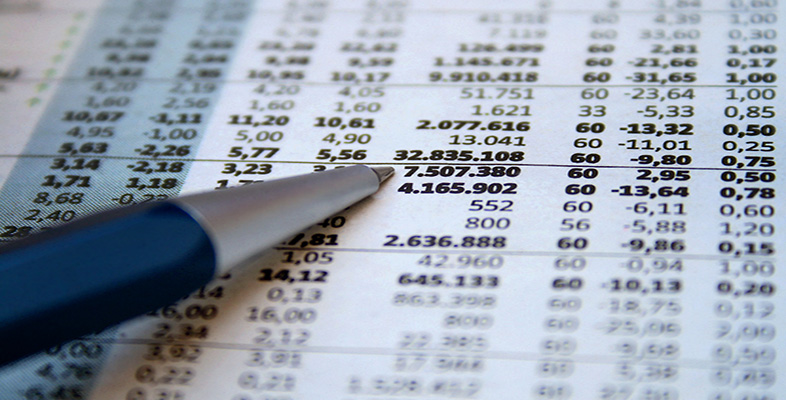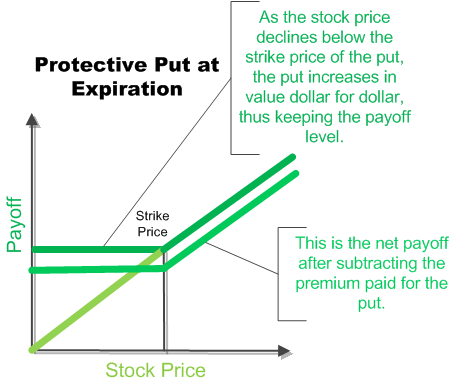Financial and Operating Leverage, Leverages in Financial Management


Its based in the assumption that fixed charges funds can be obtained at a lower cost than firms required rate of return. Efiling Income Tax Returns is made easy with ClearTax platform. Just upload your form 16, claim your deductions and get your acknowledgment number online.
Higher the DOL, higher the impact on profitability for every percentage increases in sales. To understand operating leverage you first need to understand the concept of fixed and variable costs. Examples of variable costs are raw material costs, variable labour costs, fuel costs etc. The total cost of any business is a sum of these fixed costs and variable costs.
Financial Leverage
When leverage investment is not used properly, it can be fatal to businesses and even cause them to fail. This is especially true for businesses that have less predictable income and are less profitable. Because leverage is a multifaceted financial tool, it is somewhat complex in nature and can increase both gains and losses when used by a business or an individual investor. Understanding its benefits and drawbacks will help you expand your business and determine whether your company is ready to use this financial tool just yet. As with any other financial instrument, leverage has advantages and disadvantages that you should be aware of before employing it in your business or personal investments.
However, it also indicates that the business has a higher operational risk. In certain economic circumstances, fixed costs would theoretically increase operating revenue resulting in a reduction in the company’s revenues. A higher fixed operating cost in a firm’s total cost structure promotes higher operating leverage and risk.
Issuance of ordinary shares worth Rs.2 lakhs and the rest by procurement of 5% debt. This borrowing allows for the multiplication of gains and losses. Through achieving leverage, organizations can grow exponentially faster due to access to far more resources than their assets would generally allow. Elearnmarkets is a complete financial market portal where the market experts have taken the onus to spread financial education.
What is the difference between financial leverage and operating leverage?
Operating leverage is the name given to the impact on operating income of a change in the level of output. Financial leverage is the name given to the impact on returns of a change in the extent to which the firm's assets are financed with borrowed money.
There is another important concept to Leverage, which is known as the degree of financial Leverage. A company’s financial risk is usually measured by the degree of financial leverages. The degree of financial Leverage is defined as the change in the net income with respect to the change in operating income or earnings before interest and tax. A risk involved in the business is often measured with the degree of operating Leverage. DOL measures how a percentage change in a company’s sales will affect its profits.
Everything on Tax and Corporate Laws of India
Individuals who do not want to use leverage directly can do so indirectly by investing in companies that use leverage in their business activities. To understand leverage better, you must know that the value of the asset and the interest on the loan the company has borrowed are the two main factors that come into play. When and if the value of an asset increases and becomes more than the interest on the loan, the investor or company that owns the asset will get a higher return and thus experience profit. Whereas if the value of the asset decreases, the investor or company that owns the asset will experience a loss. After getting the idea about the different types of risk involved, let us first understand as to what is the need to segregate the costs into variable and fixed costs. Let us say a business has fixed costs as it continuously develops and markets its products.
Additionally, they are able to sell a higher volume of goods and so the cost of goods sold is often high as they make sales due to the upfront payment. Retailers have inventories that they need to store and these costs can be substantial depending on the retailer. If it is a large store then the inventory distinguish between operating leverage and financial leverage costs are going to be large but if it is small then the costs aren’t going to be too high. Financial leverage refers to the practice of borrowing money in order to increase your business’s net worth. Financial leverage increases the potential for profit and collateral for risky investments.
What is the relationship between financial leverage and operating leverage?
We model the relationship between operating and financial leverage. When operating leverage is exogenously specified, financial leverage is a monoton- ically decreasing function of operating leverage.
4) No need to issue cheques by investors while subscribing to IPO. Just write the bank account number and sign in the application form to authorise your bank to make payment in case of allotment. No worries for refund as the money remains in investor’s account. The impact of financial leverage can be understood with the help of the following exercise.
What is the difference between operating leverage and financial leverage
For example, Company ABC Ltd. has registered total sales of Rs 1000. The total costs incurred are Rs 914, out which fixed cost is Rs 814, and the variable cost is Rs 100. The Operating Leverage measures the effect of fixed operating costs, whereas Financial Leverage measures the effect of interest expenses. Operating Leverage influences Sales and EBIT but Financial Leverage affects EBIT and EPS.

A company should be particularly careful when forecasting the sales in these situations since a tiny percentage mistake can cause a bigger error in the cash flow and net income. Leverage is an investment strategy that involves borrowing money to increase the potential return on investment. It can be used in business, professional trading, and even to finance a home.
Limitations of Leverages
Percent increase in EBIT is (48%) and percent increase in sales in (40%). It means that for every increase of 1% in sales level, the % increase in EBIT would be 1.2 times – 48/40. Leverage is to magnify shareholders return under favorable economic condition. Save taxes with ClearTax by investing in tax saving mutual funds online. Our experts suggest the best funds and you can get high returns by investing directly or through SIP.
As long as you’re aware of the number of sales your business makes and the method of calculating operating income, figuring out how to calculate your DOL isn’t a big deal. Differs from earnings before interest and taxes even though they’re both similar. The EBIT formula includes non-operating both income and expenses, and it provides the profit or losses that aren’t related to the company’s core business. Low operating leverage combined with low financial leverage indicates that the firm is missing out on profitable opportunities. A high level of operating leverage implies an increase in operating profit or EBIT. A high degree of operating leverage magnifies the effect of a small change in sales volume on EBIT.
- ClearTax serves 1.5+ Million happy customers, 20000+ CAs & tax experts & 10000+ businesses across India.
- A high level of financial leverage indicates the presence of high financial fixed costs as well as high financial risk.
- It is a useful tool in the hands of the finance manager when determining the amount of debt in the firm’s capital structure.
- However, at the time of a recession, high operating leverage is risky.
Financial leverage plays a major role in deciding the optimum capital structure. The capital structure is concerned with the raising of long-term funds both from the shareholders and through debt. A financial manager has to decide about the ratio between fixed cost funds and equity share capital. The effects of debt on cost of capital and financial risk have to be considered before selecting a final capital structure. The EPS of a company is strongly affected by the degree of financial leverage.
It is a function that establishes the relationship between a company’s costs, fixed and variable. A company that hashigh operating Leverageusually has a large amount of fixed costs, which indicates that a big rise in sales can lead to heavy changes in profits. A company with low operating Leveragehas large variable costs, which means that it earns a smaller profit on each sale. However, it does not have to increase its sales in order to cover its low fixed costs. The primary effect of this financial strategy is a magnification of fluctuation in earnings before interest and taxes on a company’s EPS.

Because of unpaid bills looming, creditors may launch a petition in bankruptcy proceedings to have the firm assets sought to sale for recovering their obligations. We use operating leverage as a cost-accounting formula to measure how a project or firm can increase the operating income by increasing total revenue. As a result, financial leverage can be defined as a company’s ability to use fixed financial charges to magnify the effects of changes in EBIT on EPS. The greater the proportion of fixed charge-bearing funds in a firm’s capital structure, the greater the Degree of Financial Leverage , and vice versa. Given the above logic, it must generate more returns than the interest amount for the company to gain maximum profits. Companies usually plan to achieve this by using a combination of equity and debt to finance their business activities or raise funds.
Large fluctuations in a company’s earnings may occur due to increased financial debt. Because of this, the business’s stock price will be irregular more rapidly, making correct accounting of share options held by corporate workers difficult. When stock prices go higher, the corporation will pay off more significant shares to its stockholders. The greater the proportion of fixed operating costs and financial charges, the greater the degree of combined leverage. The value of combined leverage, like the other two leverages, must be greater than one.
Companies with a large proportion of fixed prices to variable prices have larger levels of operating leverage. A business would benefit if the can estimate the Degree of Operating Leverage or DOL. The influence of the leverage on the proportion of sales can be quite putting if not taken critically; subsequently it is really important to minimize these risks of the enterprise. If you get the next diploma of working leverage or DOL then you need to try to steadiness the working leverage to balance with the monetary leverage so as to provide with profits to the corporate. The degree of operating leverage can also be calculated by subtracting the variable costs of sales and dividing that number by sales minus variable costs and fixed costs. For example, for the fiscal year ended 2019, Company A had sales of $55.63 billion, fixed costs of $11.28 billion, and variable costs of $30 billion.
If there is any change in the sales, it will lead to corresponding changes in profit. The company may use finance or leverage or operating leverage, to increase the EBIT and EPS. Financial leverage measures the percentage of change in taxable income to the percentage change in EBI T. Operating leverage describes the over all position of the fixed operating cost. Operating leverage measures the relationship between the sales and revenue of the company during a particular period. Operating leverage is one of the techniques to measure the impact of changes in sales which lead for change in the profits of the company.
For indirect Leverage, they can invest in companies that use Leverage in their day-to-day business to finance or expand operations, without increasing their expenses. If the firm obtains fixed cost funds at a higher cost, then the earnings from those assets, the earning per share and return on equity capital will decrease. Utilizing a higher degree of operating leverage rises the risk of cash flow problems that results from errors in forecasts of future sales. One possible effect caused by the presence of operating leverage is that a change in the amount of sales results in a “more than proportional” change in operating profit .
What is the difference between operating leverage and financial leverage Why is it important for a business to calculate its operating lever?
The Operating Leverage measures the effect of fixed operating costs, whereas Financial Leverage measures the effect of interest expenses. Operating Leverage influences Sales and EBIT but Financial Leverage affects EBIT and EPS. Operating Leverage arises due to the company's cost structure.



